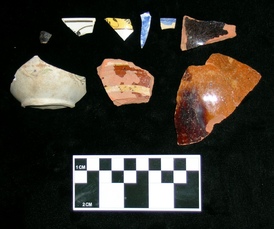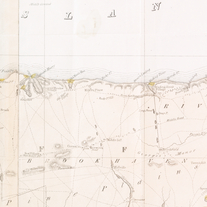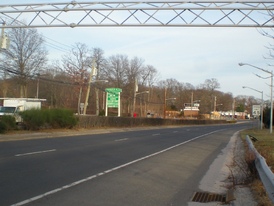Many historically African American communities no longer exist but archaeological investigation can contribute to our understanding of the history of these places.

Rocky Point
Rocky Point is a hamlet located in northern Brookhaven Town. Today, it is a typical suburban settlement characterized by strip malls and shopping areas along North Country Road and residential neighborhoods to the north of this main road. In the 19th century, however, it was a rural, farming community and home to a small settlement of African Americans.
As early as 1789, Jonah Miller lived in the rural wilderness of Rocky Point more than two miles south of the historic village. Miller was probably one of the earliest black property owners in the community. He was a farmer who acquired a large amount of land between the late 18th and early 19th centuries. Active in community affairs, he served as a witness for several financial transactions for his black neighbors, was a member of Mount Sinai Congregational Church, and had at least one child who attended school.
By 1790, Miller's household stood alongside three other homes that were all inhabited by free African Americans. The Miller, Davis, Sell, and Jessup families resided and owned property in the Town of Brookhaven during the period of gradual emancipation in New York (between 1799 and approximately 1830). While these families were considered free, there were still many Africans and African Americans that remained enslaved in New York at this time.
Archaeology at the Betsey Prince site has shed light on the activities and lifeways at the household of Prince and Elizabeth Jessup. The accumulation of woodworking tools suggests that Prince was a skilled carpenter. Broken pieces of teawares provide hints about the social and domestic activities of Betsey, who inherited the house after the death of her husband Prince.
By the mid-19th century, new African American families moved to Rocky Point, in some cases replacing the earlier households. Meanwhile, black settlements were growing in other parts of northern Brookhaven Town. By 1920, however, the African American settlement at Rocky Point was gone, and the memory of the houses was gradually erased from the landscape.
This entry contributed by the Center for Public Archaeology at Hofstra University



